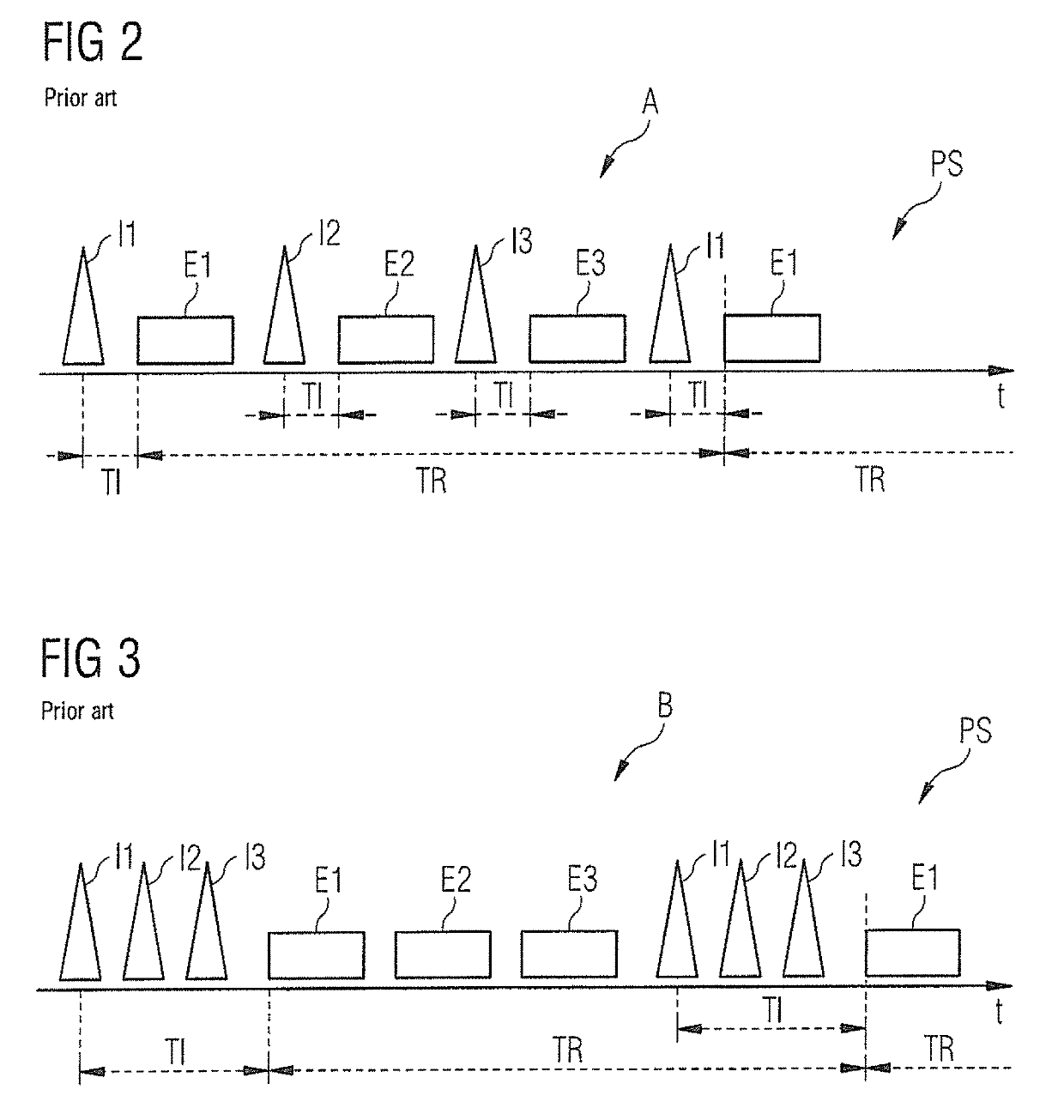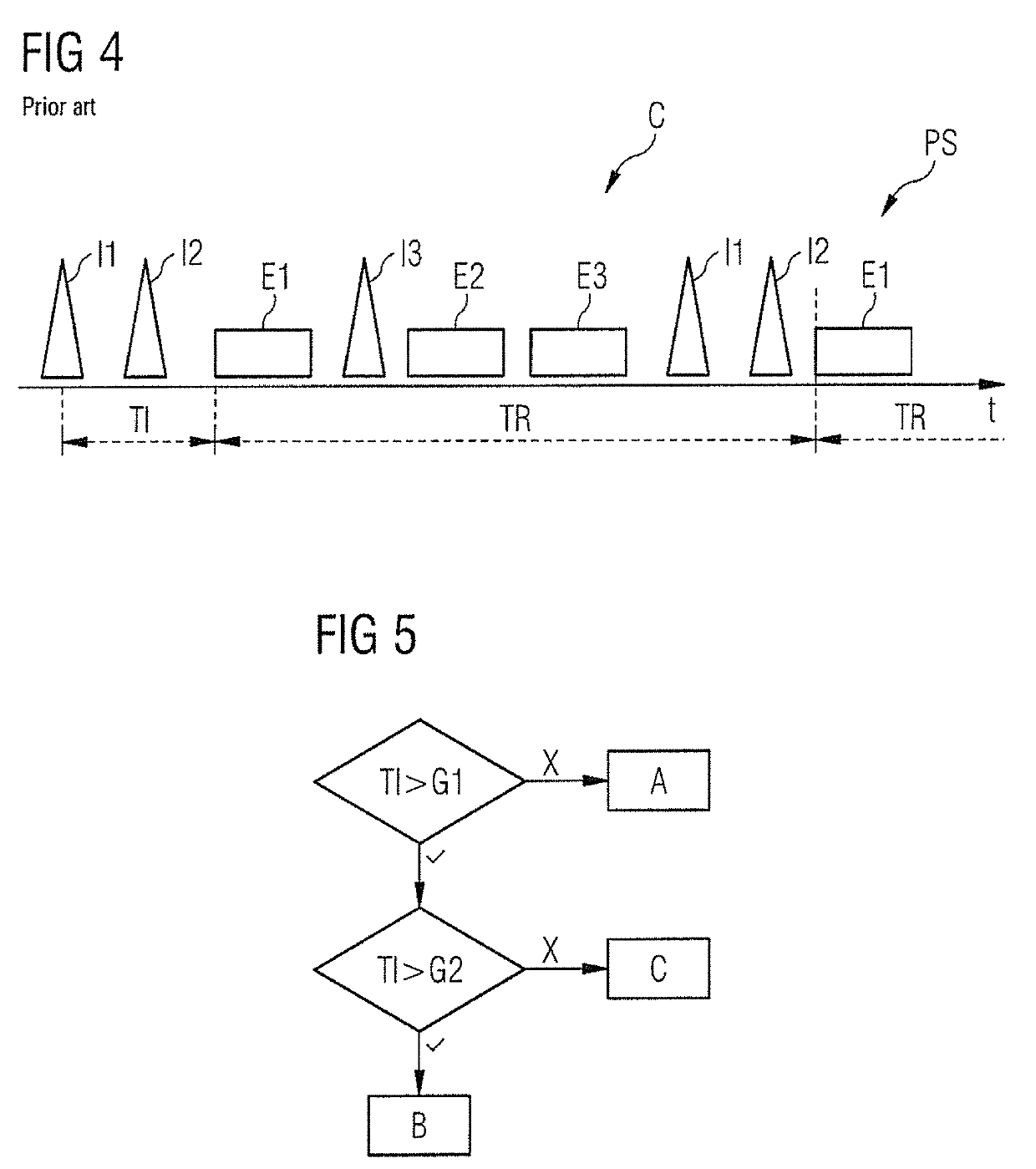Method and computer for producing a pulse sequence for controlling a magnetic resonance imaging apparatus
a technology of magnetic resonance imaging and pulse sequence, which is applied in the direction of measuring devices, instruments using magnetic resonance, and measuring devices, etc., can solve the problems of inability to produce pulse sequences, so as to improve the acquisition of magnetic resonance images, improve the accuracy of magnetic resonance acquisition, and improve the effect of conventional magnetic resonance acquisition
- Summary
- Abstract
- Description
- Claims
- Application Information
AI Technical Summary
Benefits of technology
Problems solved by technology
Method used
Image
Examples
Embodiment Construction
[0073]Highly simplified diagrams are used below to depict pulse sequences. For a better understanding of the invention, the various pulses are shown in some cases as a function of time t on a common time base, or in a table. Normally in a pulse diagram of a gradient echo sequence, the radio-frequency pulses (RF pulses) to be emitted and the gradient pulses are shown on different time axes lying one above the other. Usually, the RF pulses are shown on a radio-frequency-pulse time axis, and the gradient pulses are shown on three gradient-pulse time axes, which correspond to three spatial directions. Thus, for instance, as regards their amplitudes, readout-gradient pulses can be allotted to the three gradient axes, and hence be oriented in space as required.
[0074]The following figures show elements that are essential to the invention or helpful to understanding the invention.
[0075]FIG. 1 shows a simplified diagram of a magnetic resonance imaging system 1 according to the invention. It ...
PUM
 Login to View More
Login to View More Abstract
Description
Claims
Application Information
 Login to View More
Login to View More - R&D
- Intellectual Property
- Life Sciences
- Materials
- Tech Scout
- Unparalleled Data Quality
- Higher Quality Content
- 60% Fewer Hallucinations
Browse by: Latest US Patents, China's latest patents, Technical Efficacy Thesaurus, Application Domain, Technology Topic, Popular Technical Reports.
© 2025 PatSnap. All rights reserved.Legal|Privacy policy|Modern Slavery Act Transparency Statement|Sitemap|About US| Contact US: help@patsnap.com



